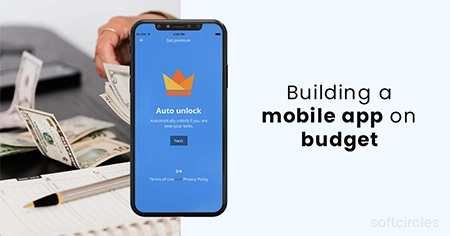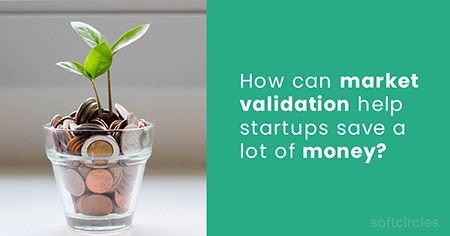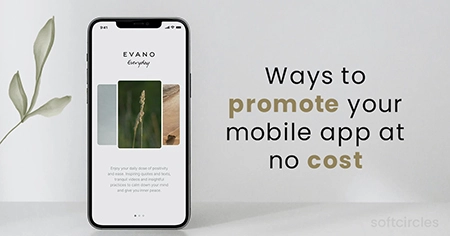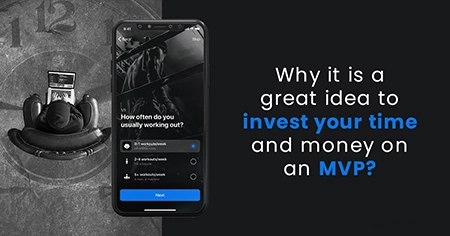While the total expenses of building a mobile app remain high, there are many actions you can take to lower your product's prices. Before you spend any money on building the product, you should properly prepare everything and make sure that your app concept is excellent, that you have a viable business strategy, and that the product you want to produce is needed; the easiest way to do this is to attend a Discovery workshop.
An MVP should be your product's initial iteration. The MVP's goal is to gather feedback, test whether your idea is practical, determine whether there is a market for your product, and learn how people are using your software, how it can be improved, and what their overall opinion is of it. You don't need all of the bells and whistles, a complicated pricing system, or in-app purchases to do this, because none of them will matter if no one uses your product.
Focus on a Single Platform
Our first piece of advice to anyone developing a new mobile app is to focus on only one platform. Building a mobile product for both platforms in the early phases is not cheap — you'll have to pay for two different pieces of software — and it's also not fast, since additional design and development time is required. In the beginning, Instagram and Foursquare were both iOS-only apps; but, once they've achieved product-market fit, they develop Android versions as well. Clubhouse is another popular smartphone app that is only available on one platform.
Features: Do’s and Don’ts
The first version of your mobile product should just contain the key feature of the concept you wish to test. MVP stands for Minimum Viable Product. Shazam is an excellent example; when they first launched, the MVP only had one feature: identifying the name of a song based on a recording; however, after proving their concept, they added all of the other social features, charts, notifications, and so on. The entrepreneurs may pivot their idea and apply alternative techniques after receiving feedback from their consumers because the MVP has a limited feature set. A complicated, feature-rich product is more expensive to develop, more difficult to update, and more difficult to add or modify.
In most situations, you can simply ignore the following functionalities in the first version of your mobile app:
- Push notifications and deeper linkage increase codebase's complexity and introduce new circumstances to cope with. If you don't want to use deep linking, you may use push notifications instead. Push notifications can keep users engaged and remind them of your app; but, you must first guarantee that you have a user base to deliver those communications to, and in 95% of cases, push notifications will not help you build your user base.
- Simpler Login - Logging in with your phone number, Apple Sign In, or Google is cheaper and faster than utilising social networks or complex verification methods. Integrating several sign-in options such as Facebook, Google, LinkedIn, Twitter, and Apple Sign In is not a cheap procedure. You should avoid hindering the user's experience in any way while building an MVP. For example, new users don't want to create an account before checking out an app, so if you can utilise a short login method like a phone number, or no login procedure at all, your early adopters' experience will be better, and you'll save money on development.
- Unit tests and test automation will verify that the product you're providing performs what it's meant to do, but in the case of startups, when the whole product roadmap and feature requirements are more flexible and, in 99 percent of cases, change, it's preferable to stick to manual testing. Unit tests and automated testing take a long time to set up, and while they're very valuable for mature products, they're usually not needed for an MVP.
Design
In the MVP, as many out-of-the-box design components as possible should be employed. Use the default date picker instead of dedicating time to developing a unique design for secondary components if your project requires one. Instagram and Whatsapp both include a lot of native or near-native UI components, and they're both quite popular. Focus on the user flows rather than the design when building an MVP; giving early adopters a quick and easy means to perform a task is more beneficial to them than a beautiful UI animation or visuals.
You'll save a lot of money not just during the design process, but also throughout the development phase, because native components are much easier to build and utilise than complicated ones. For instance, if a developer needs to use a native date picker, he could implement it in the app in a couple of hours, if he needs to build it from scratch, it might take even weeks to get all the animations right.
Development
If you're not a developer, you'll almost certainly need someone to help you construct the app. You have three options: employ an in-house developer, engage a freelancer, or hire a development agency.
Hiring an in-house developer is not a feasible option for most entrepreneurs since they do not yet have a proven business model and risk not being able to pay the hired individual or simply not having enough work for a full-time developer.
Using a freelancer or a specialist agency are your best alternatives. Finding a developer that will supply on time and implement in a way that will support your product's roadmap is a difficult challenge. Trustworthy specialist firms have already created mobile apps, can provide you with insights and direction, and typically have end-to-end skills in-house, so you won't have to go for a new freelancer if you need a new design, a brand change, or marketing assistance.
Despite the fact that agencies are more expensive than freelancers, you can be certain that your product will be delivered on schedule, tested, and produced by someone who has done it before and is experienced with the mobile product lifecycle. Furthermore, mobile product development companies will offer you advice and help throughout the whole process of creating, releasing, and advertising a mobile app.








